Green thumb: landscape architect Enzo Enea on bringing mysticism to Miami’s waterfront
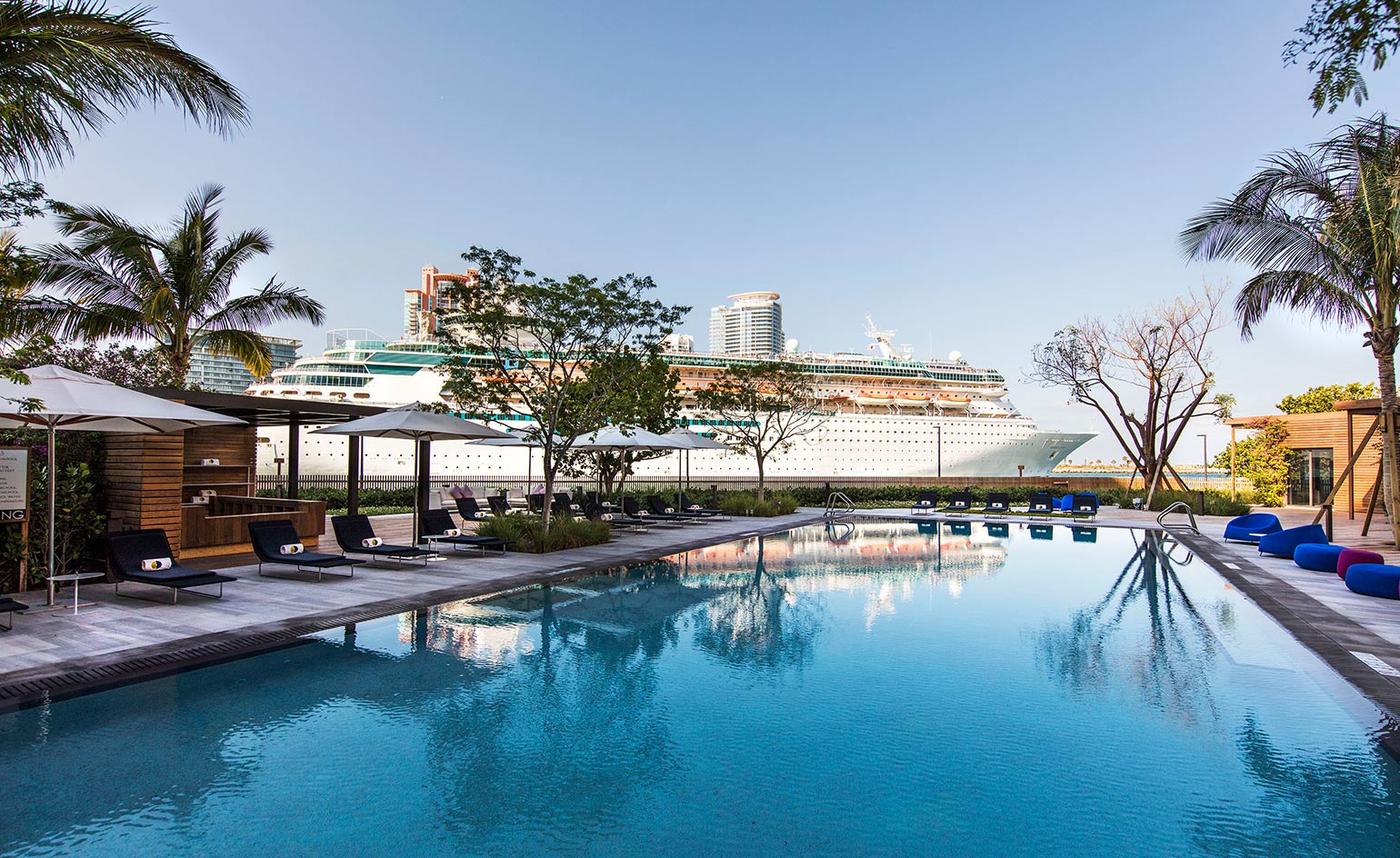
From his first job working on the landscaping of Hawaii’s Sheraton Hotel in the 1990s, Enzo Enea has been refining his craft. So much so that the Swiss-based founder and CEO of Enea Landscape Architecture is, these days, the go-to guy for creating lush green spaces that combine head-turning showmanship with a nuanced eye for balance and intimacy.
These are particularly busy times for Enea’s practice especially in Miami where his name is on the hoardings of a clutch of bold-faced projects including Enrique Norten’s One Ocean, Arquitectonica’s Oceana Bal Harbour, Zaha Hadid’s One Thousand Museum, OMA’s Park Grove and Isay Weinfeld’s Fasano Residences + Hotel Miami Beach.
He recently completed work on the 43-residence condominium Palazzo del Sol, a palatial community on Fisher Island’s last prime waterfront development site, whose 10ft high floor-to-ceiling windows look out over the Atlantic Ocean, South Beach and downtown Miami.
We took the opportunity to pin the landscape architect down to find out more...
Wallpaper*: What was the brief for the Palazzo del Sol, and how did you interpret it?
Enzo Enea: Two years ago, we were approached by Fisher Island Holdings to develop a landscape concept for the outdoor spaces of Palazzo del Sol. The brief was to create a completely new concept of outdoor living, by maximising the use of the exterior areas and making the outdoors an extension of the interior spaces of the Palazzo del Sol building.
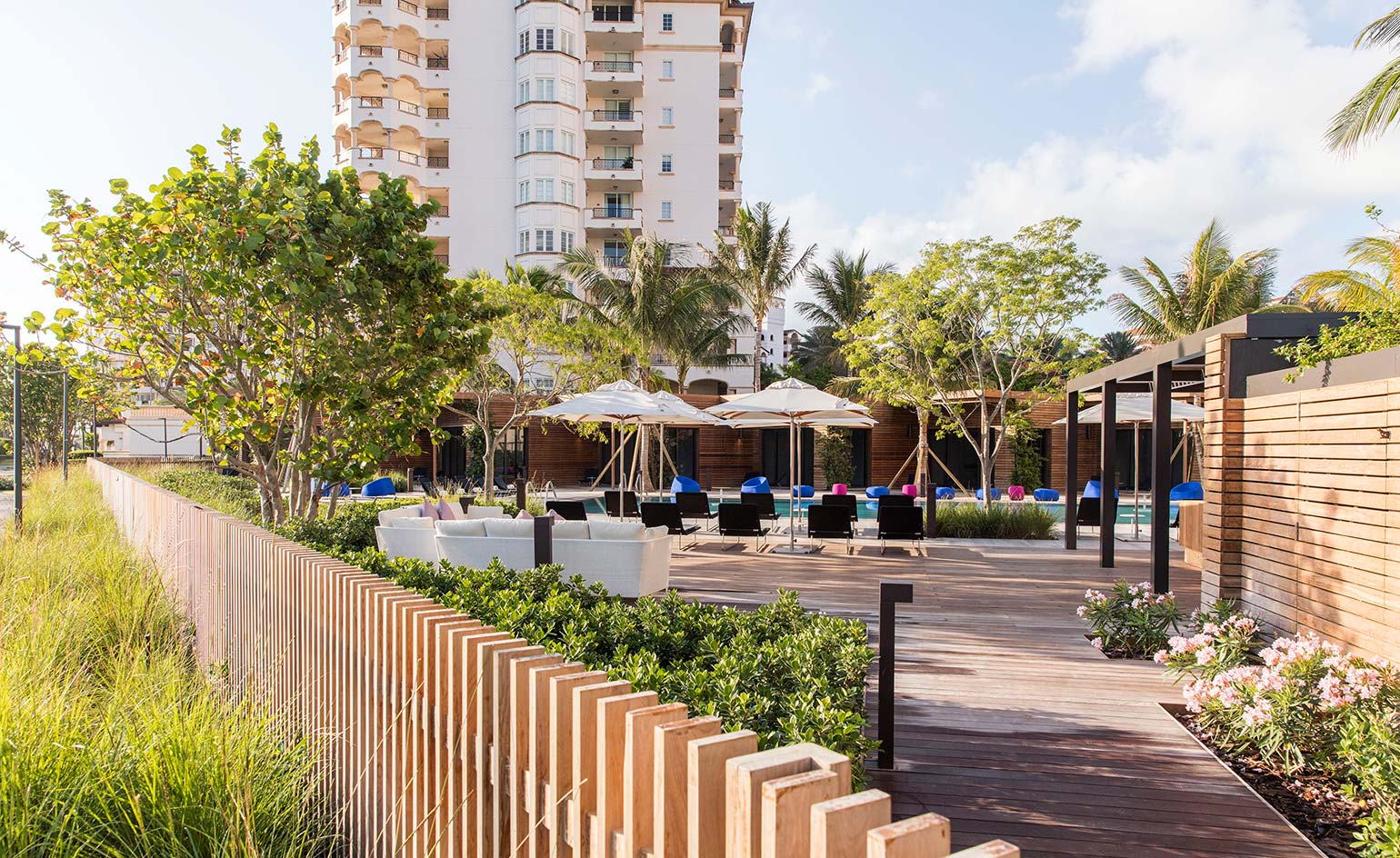
Enea worked with Miami's specific micro-climate in order to create a design that would feel at home in the city
In a tropical climate like Miami’s where temperatures can exceed 40°C, such a requirement requires careful study to create a micro-climate that would allow the families to really enjoy the outdoors. We were inspired by the idea of indoor and outdoor connectivity, but the view of the water was key. It’s why we changed the position of the cabanas to face the water and open up views by strategically placing trees and palms away from those views.
W*: What was the most challenging aspect of the project and how did you resolve it?
EE: The project was already under construction before we were involved, so that made the design process atypical. It was a challenge to catch up. As there was no pause in the construction schedule, we had to provide a concept design that was not only fresh, but feasible in terms of constructibility. We had to work efficiently to build trust and bring value to the project. Happily, the client was very open to the bold moves we proposed.
W*: Which part of the project are you proudest of?
EE: The most notable part of the gardens is the arrival and porte-cochère drop-off, and the pool deck that overlooks the waters of Government Cut and South Point Park. We designed architectural elements draped with flowering vines to make the space more green and fresh. The design weaves the natural paving materials with varying textures and shades of green to make a natural but manicured landscape.
W*: What is your assessment of the state of landscape architecture today?
EE: Landscape architecture is fundamentally about designing our future environment and producing remarkable transformations. It is a combination of science, engineering, biology and art, and it is more complex than most people can think. It is hard to think of another profession that has accomplished so much for society.
W*: What are some pitfalls that young practitioners starting out in the business should be aware of?
EE: It is important to be practical. Pushing the envelope in design is a given; however, it is important not to lose sight of the goal of the projects, and to respect the client’s budget.
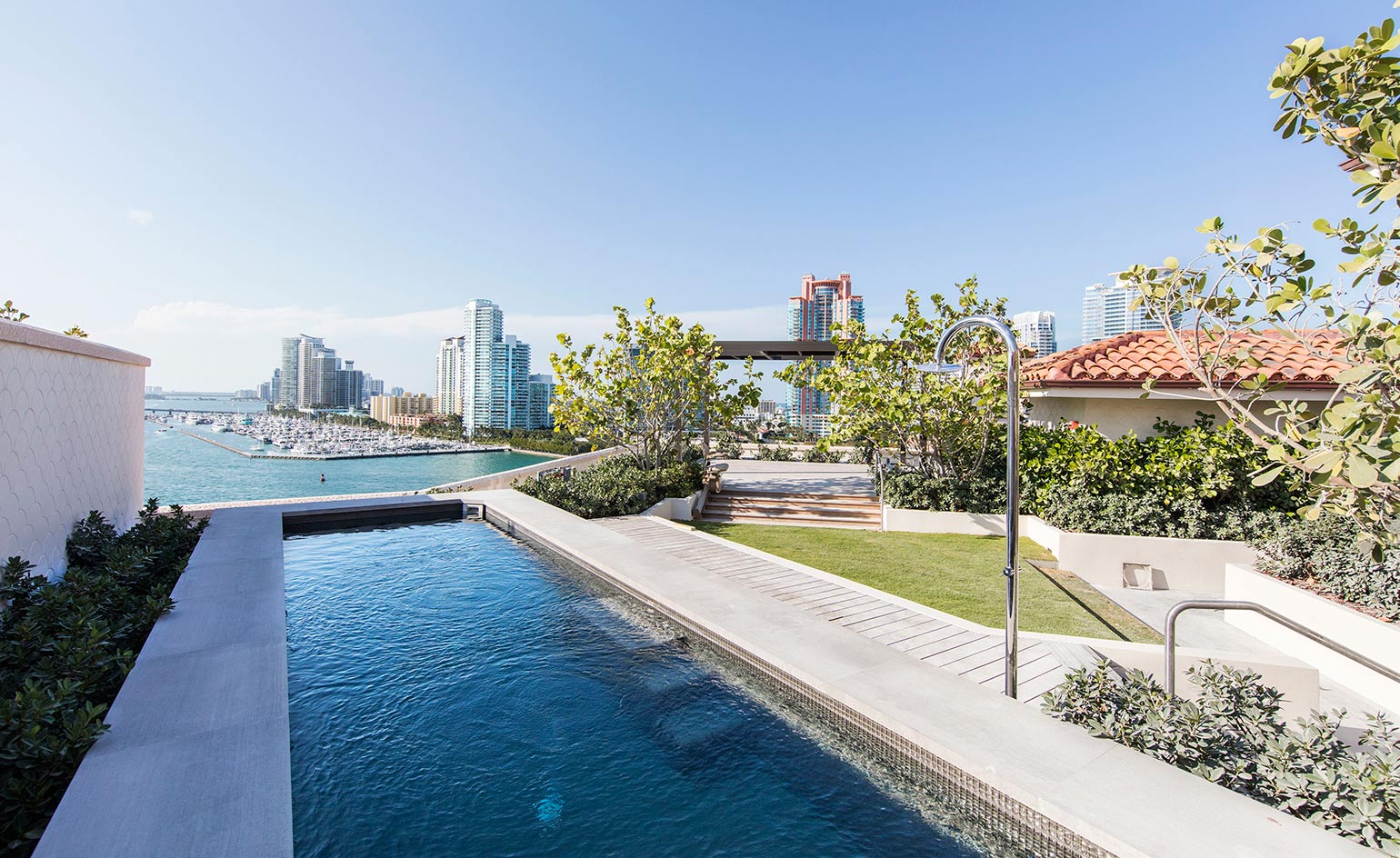
Water views were key, so the architect worked towards opening up views to the sea
W*: What, in your view, are some common mistakes made by landscape architects?
EE: Not integrating the landscape design with the building architecture and the place. The landscape architect must be aware of the surroundings, the climate, the plant-hardiness zones, the style of the architecture. It’s not about decorating, but integrating.
W*: Who do you think is doing great work in your field these days?
EE: An important scope of landscape architecture is to generate value to a place. A good example is the High Line in New York. By activating this space, every developer building around Manhattan’s West Side has profited. London’s Hyde Park is another example for how important landscape is in a city.
W*: Who has influenced or inspired you?
EE: My personal design philosophy has its roots in my childhood in Italy. The summers I spent on my grandfather’s farm rooted in me the mystical properties of nature. He was part of a long line of Italian stonemasons, and my father carried on this tradition with a stone and terracotta garden decoration business. As a child, I helped my grandfather with his fountain building and, in the process, came to appreciate the importance of stone and water in the garden as calming, therapeutic elements. In 1990, I went into the business of landscape design, when I joined my father. That early exposure to the hands-on, construction aspect of the garden trade, as well its financial facets, influenced how my company was developed, and how it runs today.
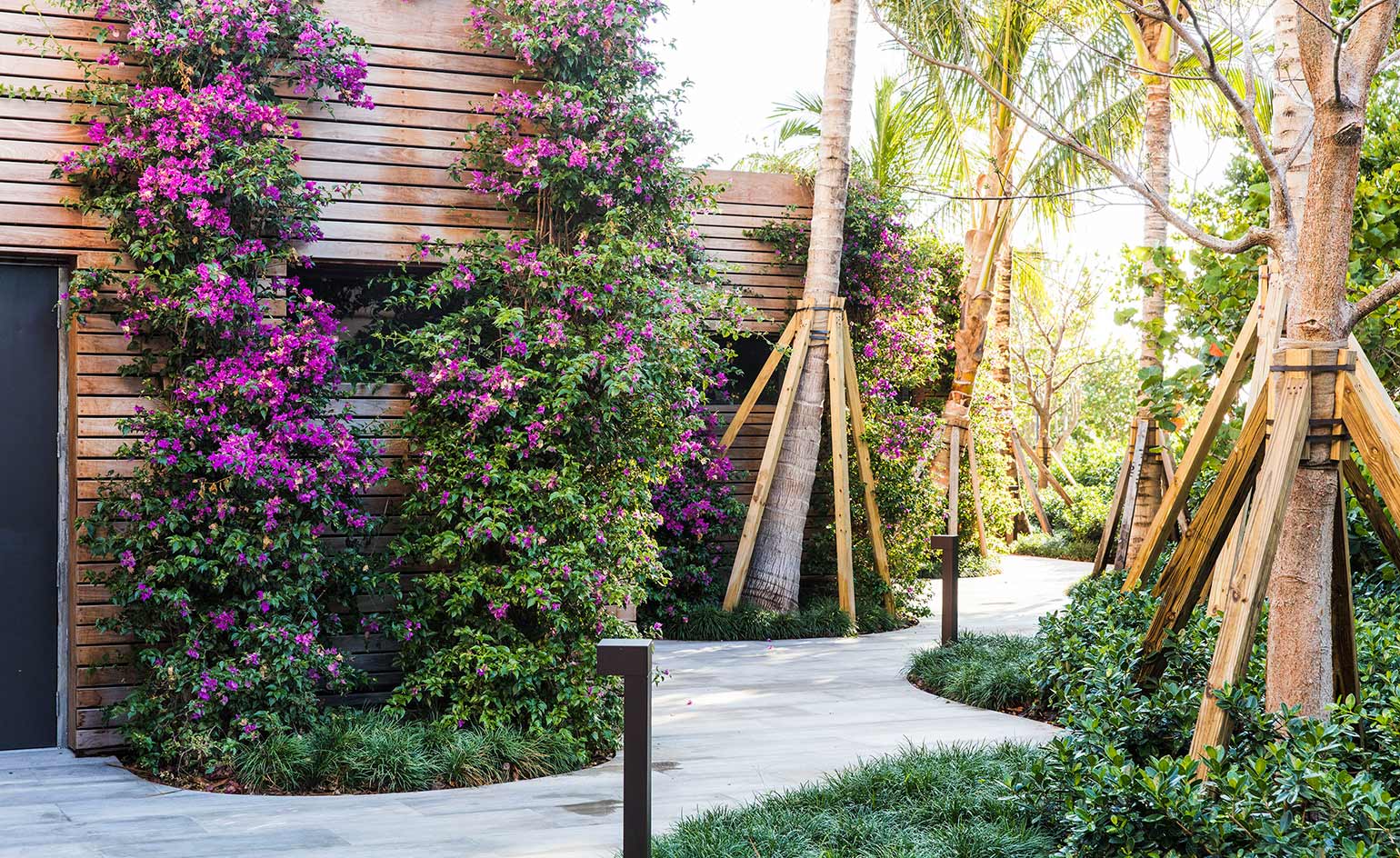
For Palazzo del Sol, Enea aimed to make the external areas an extension of the interior spaces
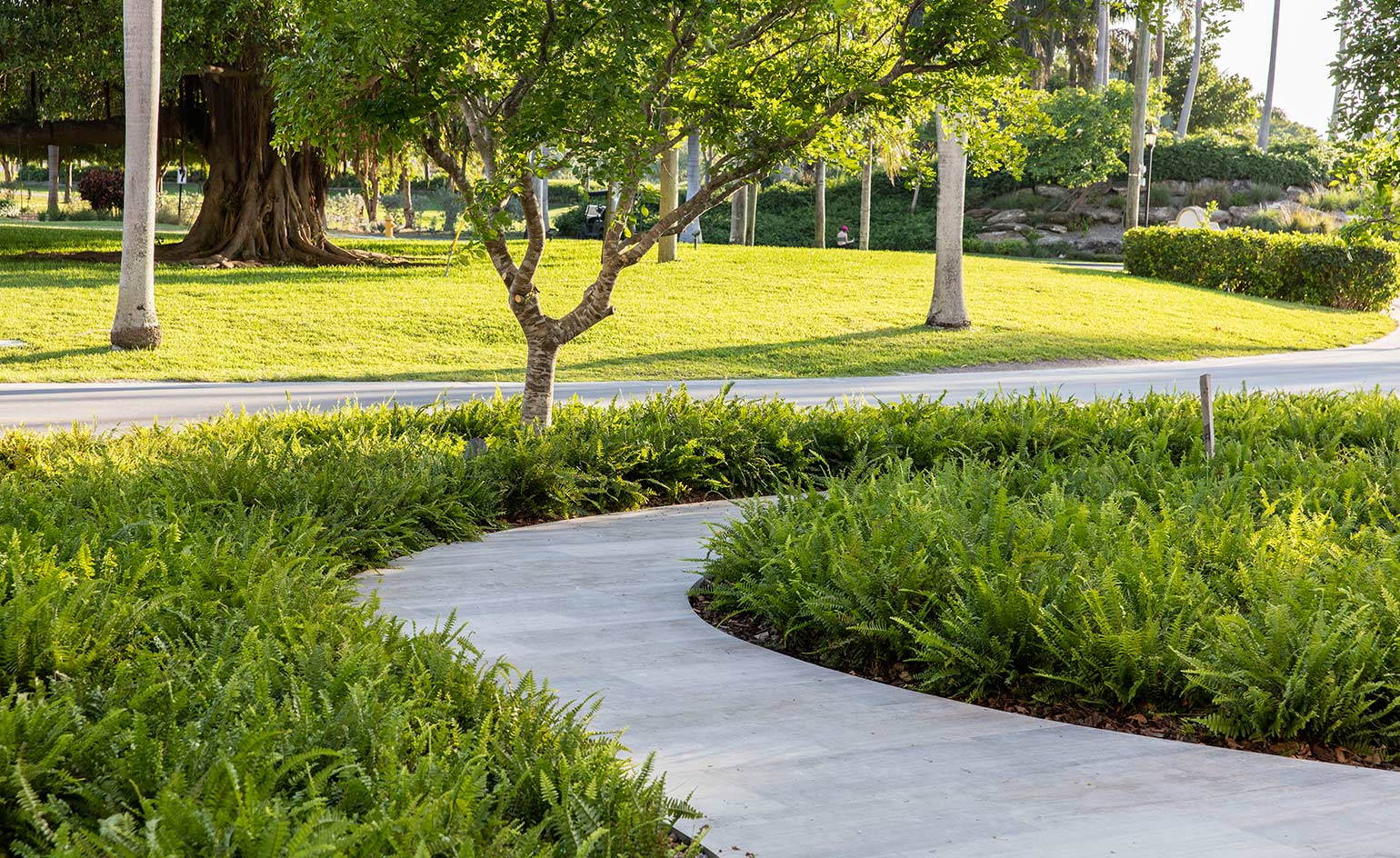
The design weaves the natural with the man-made, integrating landscape and architecture
INFORMATION
For more information visit Enzo Enea's website
Wallpaper* Newsletter
Receive our daily digest of inspiration, escapism and design stories from around the world direct to your inbox.
Daven Wu is the Singapore Editor at Wallpaper*. A former corporate lawyer, he has been covering Singapore and the neighbouring South-East Asian region since 1999, writing extensively about architecture, design, and travel for both the magazine and website. He is also the City Editor for the Phaidon Wallpaper* City Guide to Singapore.
-
 Eight designers to know from Rossana Orlandi Gallery’s Milan Design Week 2025 exhibition
Eight designers to know from Rossana Orlandi Gallery’s Milan Design Week 2025 exhibitionWallpaper’s highlights from the mega-exhibition at Rossana Orlandi Gallery include some of the most compelling names in design today
By Anna Solomon
-
 Nikos Koulis brings a cool wearability to high jewellery
Nikos Koulis brings a cool wearability to high jewelleryNikos Koulis experiments with unusual diamond cuts and modern materials in a new collection, ‘Wish’
By Hannah Silver
-
 A Xingfa cement factory’s reimagining breathes new life into an abandoned industrial site
A Xingfa cement factory’s reimagining breathes new life into an abandoned industrial siteWe tour the Xingfa cement factory in China, where a redesign by landscape specialist SWA Group completely transforms an old industrial site into a lush park
By Daven Wu
-
 We explore Franklin Israel’s lesser-known, progressive, deconstructivist architecture
We explore Franklin Israel’s lesser-known, progressive, deconstructivist architectureFranklin Israel, a progressive Californian architect whose life was cut short in 1996 at the age of 50, is celebrated in a new book that examines his work and legacy
By Michael Webb
-
 A new hilltop California home is rooted in the landscape and celebrates views of nature
A new hilltop California home is rooted in the landscape and celebrates views of natureWOJR's California home House of Horns is a meticulously planned modern villa that seeps into its surrounding landscape through a series of sculptural courtyards
By Jonathan Bell
-
 The Frick Collection's expansion by Selldorf Architects is both surgical and delicate
The Frick Collection's expansion by Selldorf Architects is both surgical and delicateThe New York cultural institution gets a $220 million glow-up
By Stephanie Murg
-
 Remembering architect David M Childs (1941-2025) and his New York skyline legacy
Remembering architect David M Childs (1941-2025) and his New York skyline legacyDavid M Childs, a former chairman of architectural powerhouse SOM, has passed away. We celebrate his professional achievements
By Jonathan Bell
-
 The upcoming Zaha Hadid Architects projects set to transform the horizon
The upcoming Zaha Hadid Architects projects set to transform the horizonA peek at Zaha Hadid Architects’ future projects, which will comprise some of the most innovative and intriguing structures in the world
By Anna Solomon
-
 Frank Lloyd Wright’s last house has finally been built – and you can stay there
Frank Lloyd Wright’s last house has finally been built – and you can stay thereFrank Lloyd Wright’s final residential commission, RiverRock, has come to life. But, constructed 66 years after his death, can it be considered a true ‘Wright’?
By Anna Solomon
-
 Heritage and conservation after the fires: what’s next for Los Angeles?
Heritage and conservation after the fires: what’s next for Los Angeles?In the second instalment of our 'Rebuilding LA' series, we explore a way forward for historical treasures under threat
By Mimi Zeiger
-
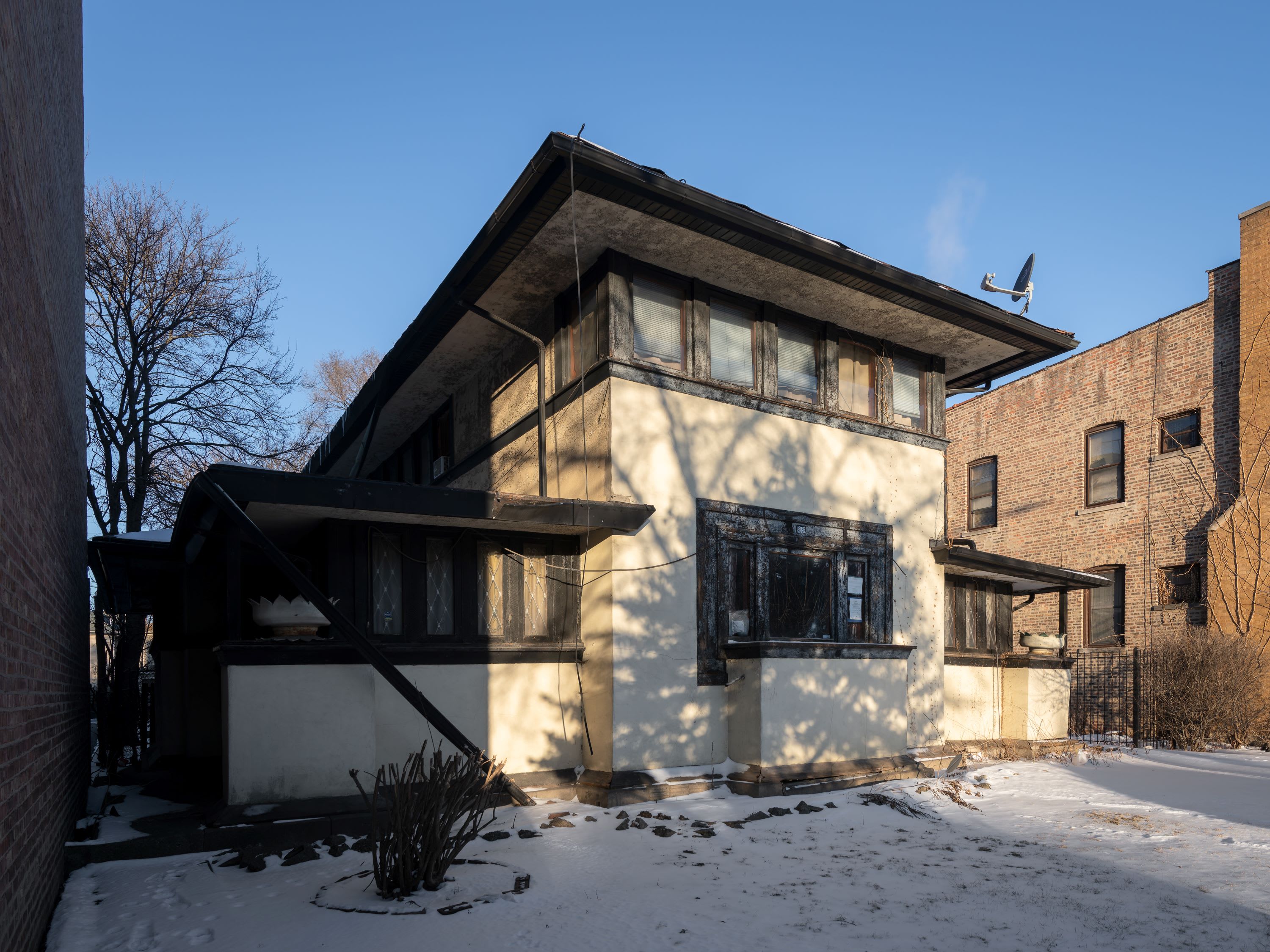 Why this rare Frank Lloyd Wright house is considered one of Chicago’s ‘most endangered’ buildings
Why this rare Frank Lloyd Wright house is considered one of Chicago’s ‘most endangered’ buildingsThe JJ Walser House has sat derelict for six years. But preservationists hope the building will have a vibrant second act
By Anna Fixsen